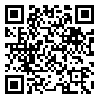دوره 20، شماره 2 - ( 7-1402 )
جلد 20 شماره 2 صفحات 62-58 |
برگشت به فهرست نسخه ها
Ethics code: 016/2563
Download citation:
BibTeX | RIS | EndNote | Medlars | ProCite | Reference Manager | RefWorks
Send citation to:



BibTeX | RIS | EndNote | Medlars | ProCite | Reference Manager | RefWorks
Send citation to:
Wongpiomoln B, Sayuen C, Pholputta L, Phengphol N. Design, implementation, and evaluation of Youth Peer Support Training to improve quality of life and stress among homebound and bedridden older adults. J Res Dev Nurs Midw 2023; 20 (2) :58-62
URL: http://nmj.goums.ac.ir/article-1-1569-fa.html
URL: http://nmj.goums.ac.ir/article-1-1569-fa.html
Design, implementation, and evaluation of Youth Peer Support Training to improve quality of life and stress among homebound and bedridden older adults. Journal of Research Development in Nursing and Midwifery. 1402; 20 (2) :58-62
چکیده: (3577 مشاهده)
Background: Health care provided by youth can support homebound and bedridden older adults. The purpose of this study was to develop a program for homebound and bedridden older adults in rural areas of northeastern Thailand.
Methods: The methodology was a mixed method, including 1) exploration of the current situation through qualitative method, 2) development of a training program, and 3) implementation and evaluation of the program developed through a quasi-experimental method from February to June 2020 in Ta-Muang Subdistrict, Selaphum District, Roi Et Province, Thailand. Data were collected through focus group discussions, in-depth interviews, Thai version of the brief form of the World Health Organization Quality of Life (WHOQOL-BREF-THAI), and Srithanya Stress Test (ST-5) questionnaires. Quantitative data were analyzed using percentages, means, SDs, and paired t tests, while qualitative data were analyzed using content analysis.
Results: The qualitative method showed 4 major themes, including 1) lack of caregivers, 2) lack of knowledge, 3) loneliness and stress, and 4) under the poverty line. The training program involved 6 activities: 1) providing knowledge in caring for older adults to educate and support youth, 2) demonstrating and practicing in caring for older adults to educate and support youth, 3) caring for older adults with love and care, 4) providing hygiene care to older adults, 5) promoting self-worth and self-confidence in youth, and 6) enhancing community participation. The quantitative method showed after the implementation of this training program. Findings showed that quality of life had higher mean scores, and stress had lower mean scores compared to the prior implementation.
Conclusion: This training program could promote bonding among youth and homebound and bedridden older adults through peer support from health volunteers.
Methods: The methodology was a mixed method, including 1) exploration of the current situation through qualitative method, 2) development of a training program, and 3) implementation and evaluation of the program developed through a quasi-experimental method from February to June 2020 in Ta-Muang Subdistrict, Selaphum District, Roi Et Province, Thailand. Data were collected through focus group discussions, in-depth interviews, Thai version of the brief form of the World Health Organization Quality of Life (WHOQOL-BREF-THAI), and Srithanya Stress Test (ST-5) questionnaires. Quantitative data were analyzed using percentages, means, SDs, and paired t tests, while qualitative data were analyzed using content analysis.
Results: The qualitative method showed 4 major themes, including 1) lack of caregivers, 2) lack of knowledge, 3) loneliness and stress, and 4) under the poverty line. The training program involved 6 activities: 1) providing knowledge in caring for older adults to educate and support youth, 2) demonstrating and practicing in caring for older adults to educate and support youth, 3) caring for older adults with love and care, 4) providing hygiene care to older adults, 5) promoting self-worth and self-confidence in youth, and 6) enhancing community participation. The quantitative method showed after the implementation of this training program. Findings showed that quality of life had higher mean scores, and stress had lower mean scores compared to the prior implementation.
Conclusion: This training program could promote bonding among youth and homebound and bedridden older adults through peer support from health volunteers.
| بازنشر اطلاعات | |
 |
این مقاله تحت شرایط Creative Commons Attribution-NonCommercial 4.0 International License قابل بازنشر است. |




